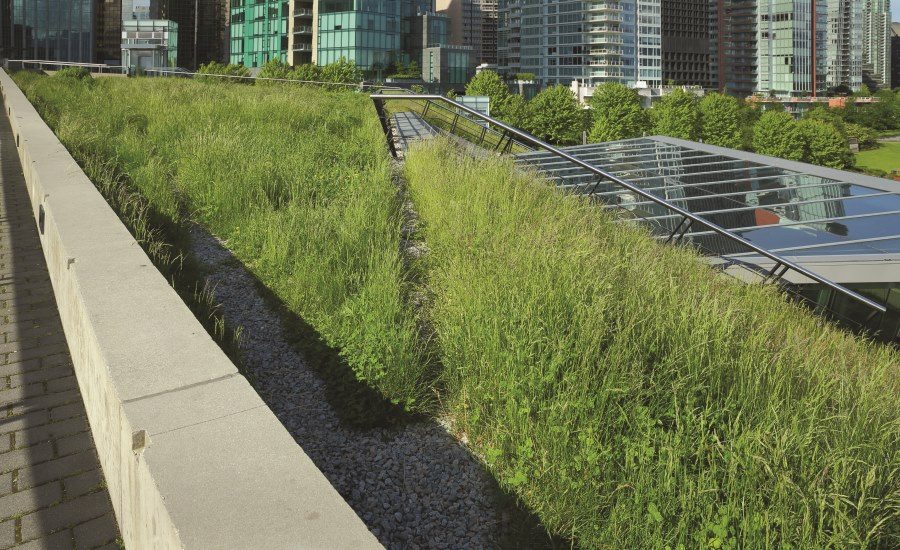As my education in roofing continues, I’ve been told that about a decade ago, sustainability burst onto the roofing scene and became the new ‘it’ phrase that roofing contractors — and the manufacturers and distributors that supply them — latched onto as they strived to infuse environmental consciousness in their business models.
While some of the buzz or excitement about the sustainability movement in roofing may have since waned, I’ve also heard experts caution not to confuse that with a misplaced notion of diminished relevance to the overall marketplace.
Simply put, sustainability is still growing and is here to stay.
A recent study from BCC Research, which studies technology-based markets in various global industries, projects the marketplace for conventional energy retrofits — like green roofs — on public and privately owned commercial buildings to grow from $85.1 billion last year to $132.3 billion by 2020 around the world. That’s a compound annual growth rate of 9.2 percent.
After years of relative stagnation compared to other continents, the trend appears to be growing strongly in North America, where the green-roof market was valued at $130.1 million in 2015. The 262-page BCC Research report estimates the value could swell to more than $582 million in just the next four years.
Challenges in pricing as well as educating roofing contractors on the latest green-roofing technology remain, but pushing sustainable solutions to customers can be still be a key differentiator for roofing contractors in their respective markets, and an impactful component of any company’s overall business plan.
John Geary and Richard Ruppert reinforced that notion with their presentation titled “Greenbucks: Cool Cash for Sustainable Roofing Systems”at the 2016 International Roofing Expo in Orlando, Fla. last month.
Geary and Ruppert, both from Firestone Building Products, helped contractors understand the procedures and benefits of adding sustainability features to their business model during the engaging seminar session. They hope contractors walked away inspired with the knowledge that they can attain distinct advantages and stay ahead of the game by becoming savvier when it comes to the products, systems and services associated with sustainability.
“High performance roofs don’t happen by accident, but with proper design, quality materials and experienced craftsmanship they can offer owners peace of mind and contractors repeat business,” Geary said.
The experts also weighed in on some of the biggest misconceptions contractors have about sustainability.
Clearly in southern climates, cool roofing surfaces are an advantage, but they don’t always have to be highly reflective. Ballasted assemblies and vegetative roofs offer similar ‘cool roof’ benefits, Geary stated. In northern climates, highly-reflective roof surfaces are seldom the most energy efficient on an individual building basis.
One of the biggest misconceptions is that a reflective roof surface will somehow compensate for lower levels of insulation due to the perceived expense of cooling versus heating. Simple calculations and a measure of common sense dictate that more energy is saved with appropriate levels of insulation, which offers its benefit 24 hours a day and at zero operational cost. Inevitably, roofs get dirty and will lose some reflectivity over time.
Another common misconception is that all low VOC adhesives smell. While that may have been the case in the past, a new generation of solvent-free bonding adhesives are odorless.
“All new products are being developed to help contractors achieve their objectives of low-cost installations that are sustainable, and of course profitable,” he said.
Lastly, as the demand for Zero Net buildings grows, roofing contractors can position themselves to be part of the solution. Roofers understand what requirements are already in place and their options to achieve these lofty goals. The same level of communication a roofing contractor will develop with an owner should be extended to the rest of the design and construction team.
“Working together, designers, manufacturers and roofing contractors can contribute mightily to the whole of the envelope system, one building at a time,” Geary said.



